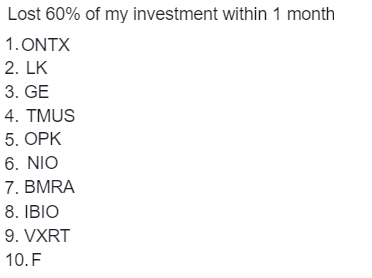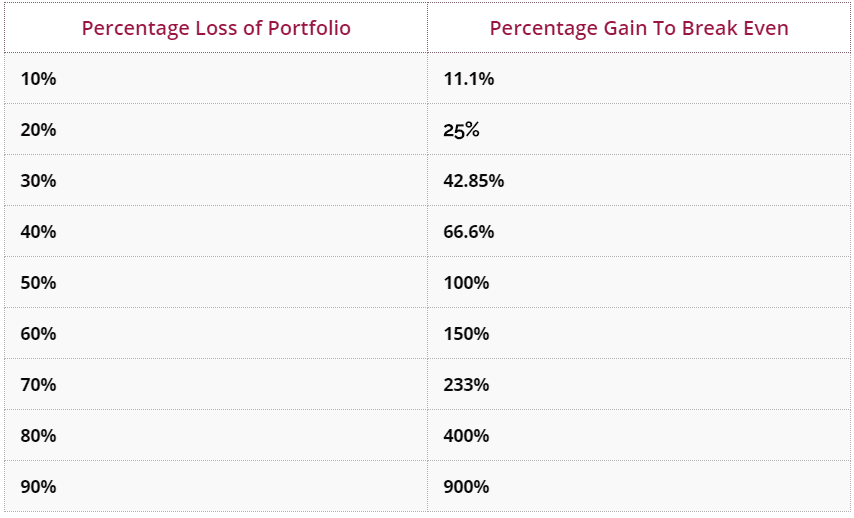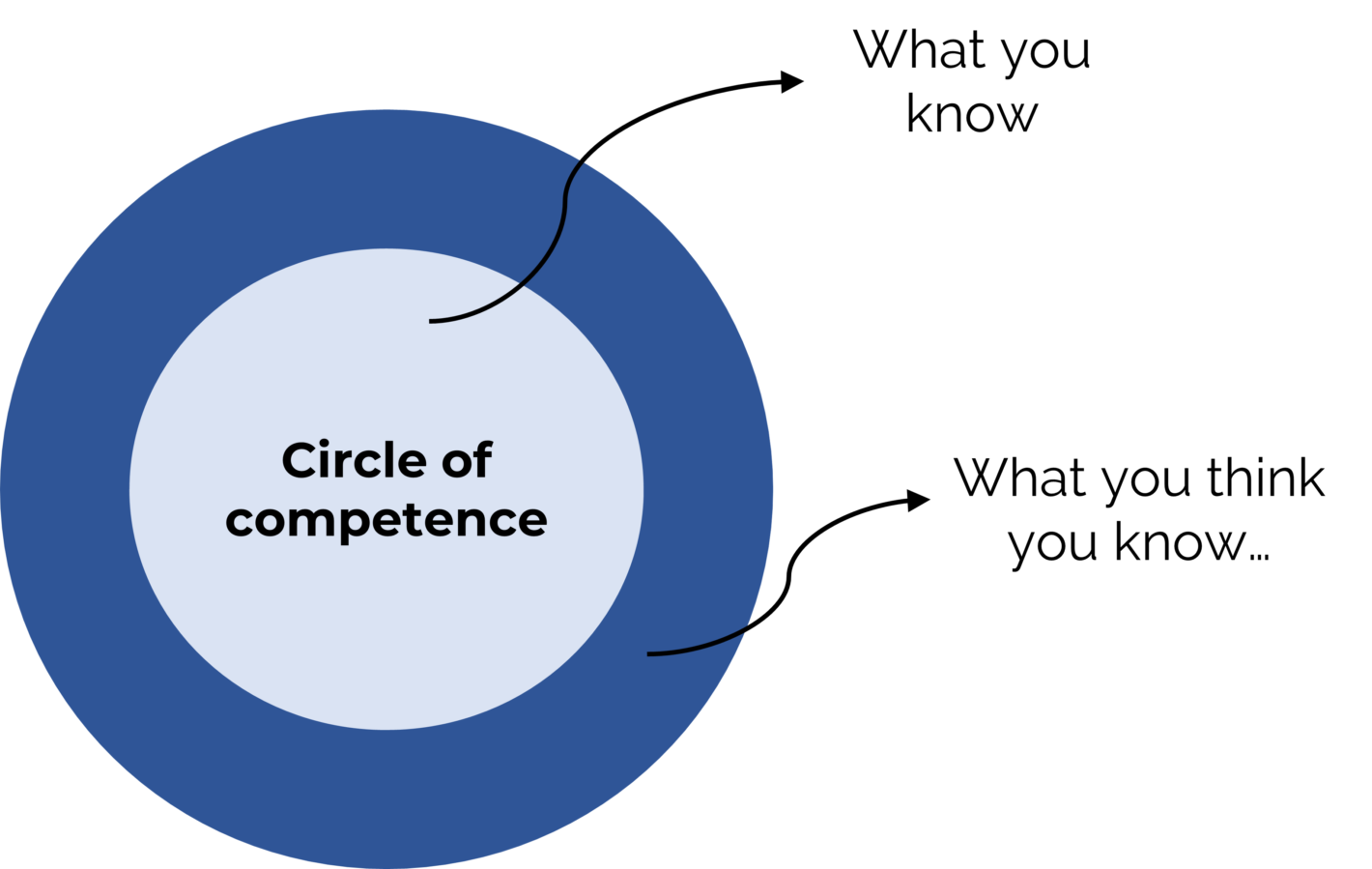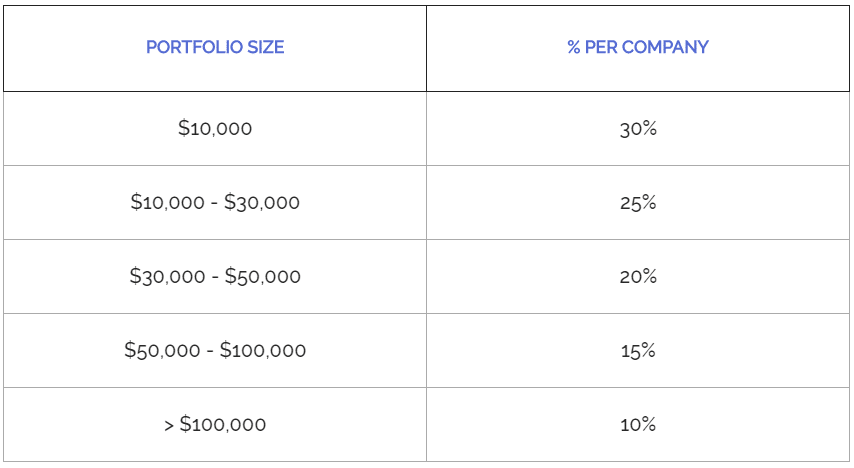Sometimes, when I see someone's portfolio went down by more than 30% or even 50% - it is usually one of two things:
- They invested in plenty of poor quality companies and a crisis started to wipe their portfolio
- Their entire portfolio is only one or two companies. (i.e. a concentrated portfolio)
And this breaks my heart - because it is so easily avoidable.
Let's quickly address the first point - investing in poor quality companies..
To illustrate, let's use a real example.

Image Taken From Investing Forum
The above image you see was taken from an investing forum, from someone who is asking for advice on what to do with his positions.
To be honest, the damage was already done.
A 60% drop in portfolio meant that his portfolio needed to grow by 150% just to break even.
Yea, crazy right?
Check out this table if you are not sure what I mean.

So what can we do about it?
Before we address that, let's talk about how we could have prevented such a tragedy in our investment portfolio.
After all, there is a saying, "Prevention is better than cure"
So how can we prevent this?
Well, simply by investing in only quality companies that are financially strong.
And it is really not rocket science.
There is a list of financial ratios that I used - and I put all of them into a checklist.
And this checklist is what guided me to filter out such poor quality companies.
In fact, if you used a checklist, you would never had invested in the above companies.
But what if, you are already in such losses?
Well, ask yourself why you invested in these companies in the first place?
Were you simply blindly following the advice of someone else?
Or did you have a fundamental reason for investing?
- If its the former - sell the stocks especially if it doesn't pass the checklist.
- If its the latter, and if the reasons are still valid then consider adding more positions.
Alright, now that we have addressed how we can avoid poor quality companies, let's dive in to portfolio diversification.
A Concentrated Portfolio Is Not A Bad Thing...
Before I go on and explain why we need a diversified portfolio - I want to clarify one thing.
That is - a concentrated portfolio is not a bad thing.
In fact, I know investors who do really well by investing in just two to three stocks every year.

Putting your eggs in one basket - not always a bad thing!
And for most other investors who try to emulate the same and concentrate their portfolio - they tend to crash and fail.
Why?
Understand this - great investors who concentrate their portfolio have one thing in common - they understand the business they are investing extremely well.
How well? It is to the extent that they would fly just to meet the management of the company.
Most common folk investors see their shares nothing more than share prices - instead of recognizing that underneath every stock, there is an underlying business.
So when is having a concentrated portfolio a good thing - it is when you understand deeply about the businesses you are investing.
For myself, I personally diversify my portfolio because I acknowledge that I won't be flying to meet management of companies...
How I Diversify My Portfolio
This is known as equity-to-equity diversification.
Before I touch on equity-to-equity diversification, I want to touch on mistakes most beginner investors make.
Most people will read a book and decided that they will allocate some money in precious metals, bonds, consumer discretionary, and etc.
And because of that, they force themselves to invest some money in gold, some in treasury bonds, some in oil, etc - simply to create a textbook-perfect investment portfolio.
I personally think that diversifying your portfolio in this manner can sometimes cripple you as an investor.
Why?
Because you end up investing in things you don't understand.
- I never ever invest in gold - because it has no intrinsic value, and I don't understand it.
- I don't invest in oil - simply because I don't know what to expect of oil prices.
But people would force themselves to invest in such asset classes - in order to create their "textbook-perfect" diversified portfolio.
The way I invest is simply to invest in things that I understand.
It is really just that simple - its not rocket science.
Warren Buffett said this - "Invest in your circle of competence."

So every investment that I make, it is important that you:
- Understand how the company make profits
- The strength of its financials
- Invest only when undervalued
The worst kind of investment is one where you can't measure its value.
Why?
Because you don't know when the asset is overvalued - and you should sell it.
So personally, I will only invest in stocks - simply because it is easier to measure the value of a business than a piece of commodity.
The bottom line is this - don't diversify for the sake of diversification.
So I said my piece on why I wouldn't touch commodities or precious metals, and why I would only invest in businesses.
How Much To Allocate Per Stock
The truth is there is no one rule of thumb.
Some may say that you should allocate no more than 10% in a stock.
Personally - I feel that the amount you should allocate really depends on your portfolio size.
The reason for doing so is because, with a smaller portfolio, your focus should be on growth.
And if you have a larger portfolio - your focus will be on protection.

If I had a smaller portfolio of around $10,000 or less, I would be more concentrated in my portfolio - say 30% per stock.
Now, 30% would mean $3000.
However, I don't enter all 30% at once - I will always enter in tranches.
I would split the $3,000 into three entries - $1000 in each entry.
The reason for doing so is so that if the stock price falls, I could lower my average cost with the subsequent entries.
As your portfolio gets bigger, you want to balance between growth and protection.
With a portfolio of $100,000 - I would limit no more than 10% in each stocks.
This means the maximum of $10,000 in each stock.
With the three tranches rule - this means that I would only invest $3,333 per entry.
In order to accommodate to all my readers, here's a rough guideline that I have done.

So that, in a nutshell, is how I diversify my portfolio.
At the end of the day, before you invest - make sure you invest only in companies with strong financials and invest only when it is undervalued.
So which strategy will you be using?
Will it be concentrating your portfolio and keeping a close eye on it?
Or would it be diversification of your stocks?
Leave a comment down below and let me know!
